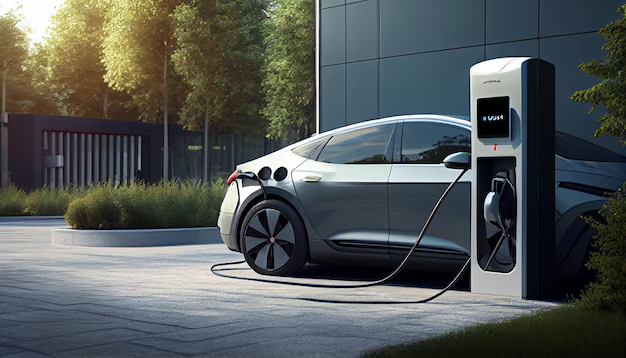In the rapidly evolving world of electric vehicles (EVs), 2024 marks a pivotal year with the advent of sodium-ion batteries. While lithium-ion batteries have long dominated the EV market, recent advancements are propelling sodium-ion technology into the spotlight. According to a recent report by Bloomberg Green, sodium-ion batteries are set to revolutionize electric vehicles by offering a more sustainable and cost-effective alternative to traditional lithium-based systems. In this article, we’ll explore how sodium-ion batteries are transforming the EV landscape, the benefits they offer, and what this means for the future of sustainable transportation.
The Rise of Sodium-Ion Batteries in Electric Vehicles
Why Sodium-Ion Batteries?
Lithium-ion batteries have been the backbone of electric vehicle technology due to their high energy density and efficiency. However, they come with significant drawbacks, including high costs and environmental concerns related to lithium mining. Sodium-ion batteries, on the other hand, use sodium—a far more abundant element. Here are some reasons why sodium-ion batteries are gaining traction:
- Cost-Effectiveness: Sodium is cheaper to extract and process than lithium, reducing overall battery costs by up to 30%, according to PV Magazine.
-
Abundance: Sodium is the sixth most abundant element on Earth, ensuring a more reliable supply chain and reducing geopolitical risks associated with lithium mining.
-
Sustainability: Sodium-ion batteries have a lower environmental impact, as they eliminate the need for cobalt and nickel, which are often associated with unethical mining practices.
Technological Advancements in 2024
In 2024, several key players in the EV industry have made significant strides in sodium-ion battery technology:
- BYD: The Chinese automaker has successfully integrated sodium-ion batteries into its latest model, the BYD Dolphin, which debuted in March 2024. This model boasts a range of 250 miles on a single charge.
-
Tesla: Known for its innovation, Tesla announced plans to incorporate sodium-ion batteries into its entry-level models by 2025, aiming to make EVs more affordable for the masses.
-
Hyundai: Collaborating with leading researchers, Hyundai unveiled a prototype SUV powered by sodium-ion cells at the Geneva Motor Show in April 2024.
Advantages of Sodium-Ion Batteries
Enhanced Charging Capabilities
One of the most appealing features of sodium-ion batteries is their capability for rapid charging. Tests have shown that these batteries can achieve an 80% charge in just 15 minutes, significantly reducing downtime for EV users. This is a game-changer for long-distance travel, addressing one of the main pain points for current EV owners—the time spent at charging stations.
Improved Safety Features
Safety is a paramount concern in battery technology. Sodium-ion batteries offer improved thermal stability, reducing the risk of overheating and fires. This safety enhancement is crucial for consumer confidence and regulatory approval, as noted by the MIT Technology Review.
Availability and Scalability
With sodium being widely available, the scalability of sodium-ion batteries is far more feasible than that of their lithium counterparts. This availability ensures that manufacturers can ramp up production to meet increasing global demand without encountering the supply chain bottlenecks that have plagued lithium-ion battery production.
Practical Applications and Buying Tips
How to Charge Sodium-Ion Battery-Powered EVs
Charging a sodium-ion battery-powered vehicle is similar to charging a lithium-ion one. However, due to their rapid charging capabilities, EV owners can expect shorter charging times at compatible stations. Look for public charging networks that support higher power output to maximize the benefits of sodium-ion technology.
Where to Buy Sodium-Ion Battery EVs
As of 2024, several automakers offer vehicles equipped with sodium-ion batteries. Some of the top choices include:
- BYD Dolphin: Available in Asia and Europe, with plans to expand to North America by late 2024.
- Hyundai SUV Prototype: Expected to hit the market in mid-2025.
- Tesla Entry-Level Models: Pre-orders are anticipated to open by the end of 2024.
What to Compare
When considering an EV with sodium-ion batteries, compare the following:
- Range: Although improving, range can vary significantly between models.
- Charging Infrastructure: Ensure there are sufficient compatible charging stations in your area.
- Cost vs. Benefits: Weigh the initial purchase cost against potential savings from lower maintenance and charging expenses.
Conclusion: The Future of Sodium-Ion Batteries in EVs
Sodium-ion batteries are poised to bring about a sustainable revolution in the electric vehicle industry in 2024. With their cost-effectiveness, abundant materials, and enhanced safety features, they are an attractive alternative to traditional lithium-ion systems. As more manufacturers adopt this technology, we can expect a broader range of affordable and environmentally friendly EV options on the market.
Are you ready to embrace the future of electric vehicles with sodium-ion technology? Let us know your thoughts in the comments below. As we move forward, keep an eye on developments in this exciting field—2024 is just the beginning of a cleaner, more sustainable transportation era.

